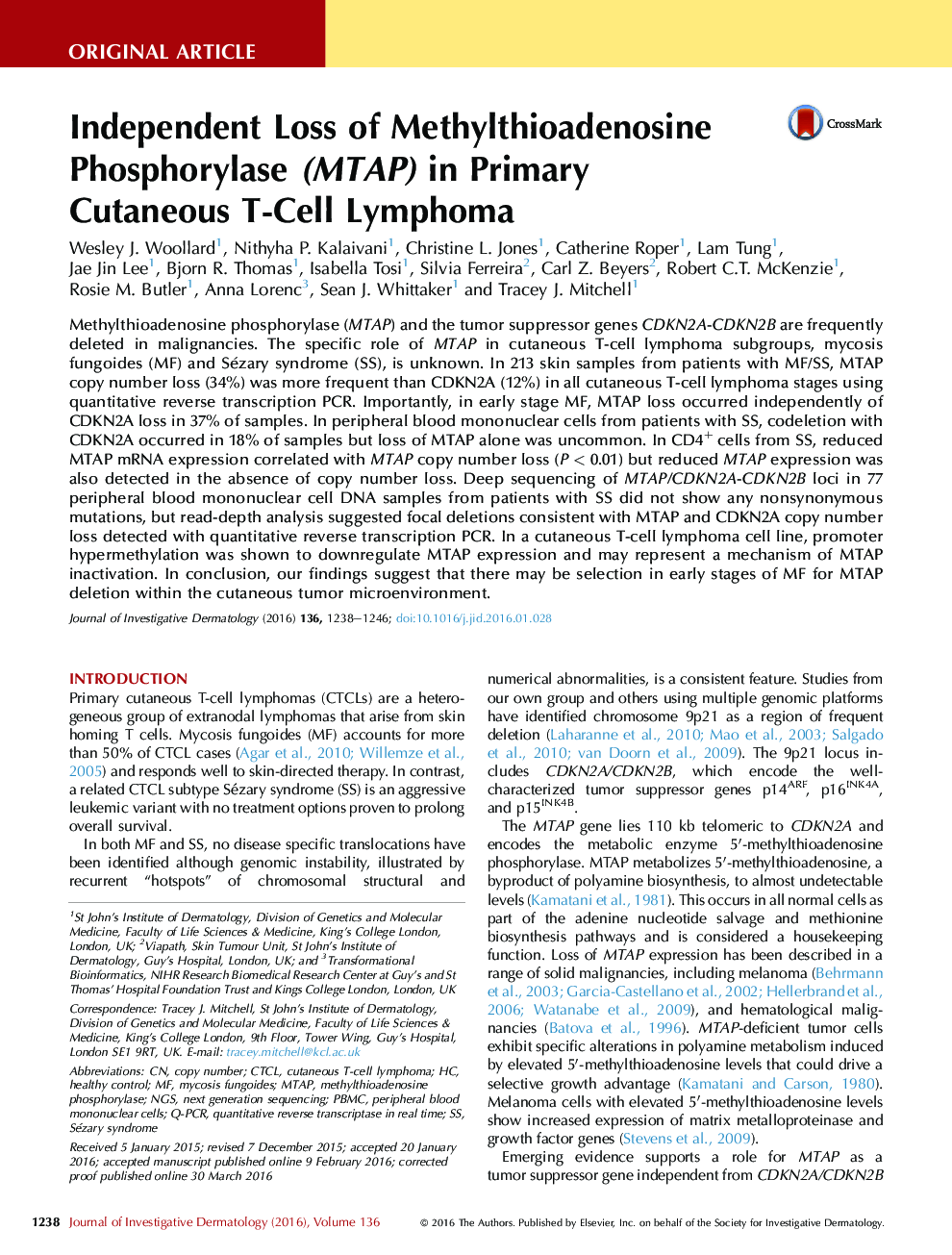| Article ID | Journal | Published Year | Pages | File Type |
|---|---|---|---|---|
| 6074880 | Journal of Investigative Dermatology | 2016 | 9 Pages |
Methylthioadenosine phosphorylase (MTAP) and the tumor suppressor genes CDKN2A-CDKN2B are frequently deleted in malignancies. The specific role of MTAP in cutaneous T-cell lymphoma subgroups, mycosis fungoides (MF) and Sézary syndrome (SS), is unknown. In 213 skin samples from patients with MF/SS, MTAP copy number loss (34%) was more frequent than CDKN2A (12%) in all cutaneous T-cell lymphoma stages using quantitative reverse transcription PCR. Importantly, in early stage MF, MTAP loss occurred independently of CDKN2A loss in 37% of samples. In peripheral blood mononuclear cells from patients with SS, codeletion with CDKN2A occurred in 18% of samples but loss of MTAP alone was uncommon. In CD4+ cells from SS, reduced MTAP mRNA expression correlated with MTAP copy number loss (P < 0.01) but reduced MTAP expression was also detected in the absence of copy number loss. Deep sequencing of MTAP/CDKN2A-CDKN2B loci in 77 peripheral blood mononuclear cell DNA samples from patients with SS did not show any nonsynonymous mutations, but read-depth analysis suggested focal deletions consistent with MTAP and CDKN2A copy number loss detected with quantitative reverse transcription PCR. In a cutaneous T-cell lymphoma cell line, promoter hypermethylation was shown to downregulate MTAP expression and may represent a mechanism of MTAP inactivation. In conclusion, our findings suggest that there may be selection in early stages of MF for MTAP deletion within the cutaneous tumor microenvironment.
